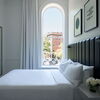
Wolfe’s Neck Center opens new campus centerpiece
 Courtesy / Wolfe’s Neck Center for Agriculture & the Environment
The Smith Center was built to Passive House standards, is entirely fossil fuel free, and is expected to produce more energy than it will consume.
Courtesy / Wolfe’s Neck Center for Agriculture & the Environment
The Smith Center was built to Passive House standards, is entirely fossil fuel free, and is expected to produce more energy than it will consume.
Wolfe’s Neck Center for Agriculture & the Environment in Freeport held an open house for its new Smith Center for Education & Research on Thursday, just over a year after it broke ground on the project.
Wolfe’s Neck is a nonprofit, farm-based education, research and visitor center situated on over 600 acres. The center focuses on demonstrating regenerative agriculture’s importance in addressing the climate crisis locally, regionally and nationally.
The new Smith Center was designed to be the centerpiece of a multi-year capital investment to build the infrastructure needed to support Wolfe’s Neck’s growing scope of work.
The Smith Center will enable Wolfe’s Neck to convene people of all ages and backgrounds, year-round. Every aspect, including the design, layout and furnishing, was designed to enhance Wolfe’s Neck’s ability to significantly grow its programmatic offerings and impact.
The $5 million investment was made possible by a combination of private donations, funding from Bath Savings and a Community Facilities Direct Loan from the Rural Development program of the U.S. Department of Agriculture, which provides affordable long-term funding to develop essential community facilities in rural areas.

“This new facility will enable Wolfe’s Neck Center’s beloved programming to grow and evolve, while also allowing our role as a leader and convener to expand,” said David Herring, the center’s executive director. “From farm camp to gatherings of our global collaborative, OpenTEAM, this space will allow climate change solutions to emerge and deepen people’s connection to the food system.”
The Smith Center was built to Passive House standards, is entirely fossil fuel-free, and is expected to produce more energy than it will consume, reflecting Wolfe’s Neck Center’s commitment to clean energy and protecting the environment.
The building was designed by Belfast architect Opal and built by Freeport contractor Zachau Construction.
The building has two classroom-style rooms to accommodate groups from five to 50, a large conference room and dining area for 150, and a commercial teaching kitchen.
Situated at the center of the campus, all key outdoor spaces, including trails, Wishcamper Livestock Education Barn, dairy barn and gardens, are easily accessible from the center.
Honoring the history of Wolfe’s Neck's innovative and entrepreneurial approach to working at the intersection of agriculture and climate, features of the new space include:
- A strong connection between the interior space and the natural landscape of Maine’s coast, including sight lines through the entire building
- The ability to host a variety of groups in multiple spaces, including businesses, nonprofits, schools and other community partners
- Entirely electric commercial teaching kitchen
- Avoiding the introduction of new soil biology, invasive species, and trucking in loam from elsewhere; the construction team exclusively utilized on-site loam for all new plantings
- The floor throughout the building is the poured concrete used for the foundation and includes floor drains throughout, which helps maximize the functionality of the rooms.
The Smith Center is named in honor of LMC and Eleanor Houston Smith and their family. In the mid-20th century, the Smiths purchased, stewarded and ensured the conservation of lands throughout Maine, including the acreage that is now Wolfe’s Neck Center.
Mainebiz web partners
What a gift to the Freeport community, the farming community, and the environment.










1 Comments